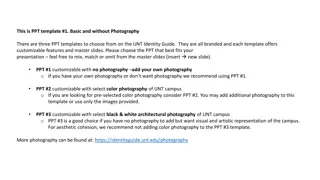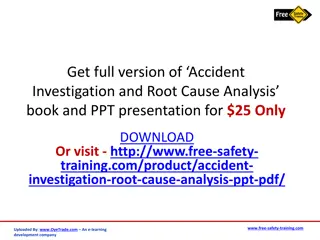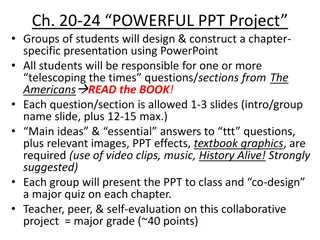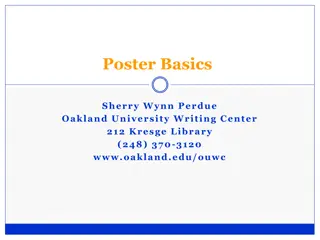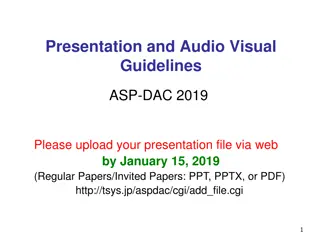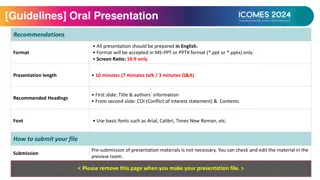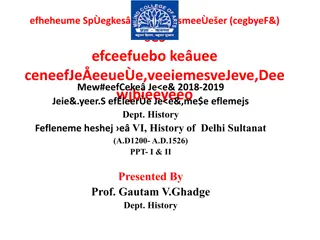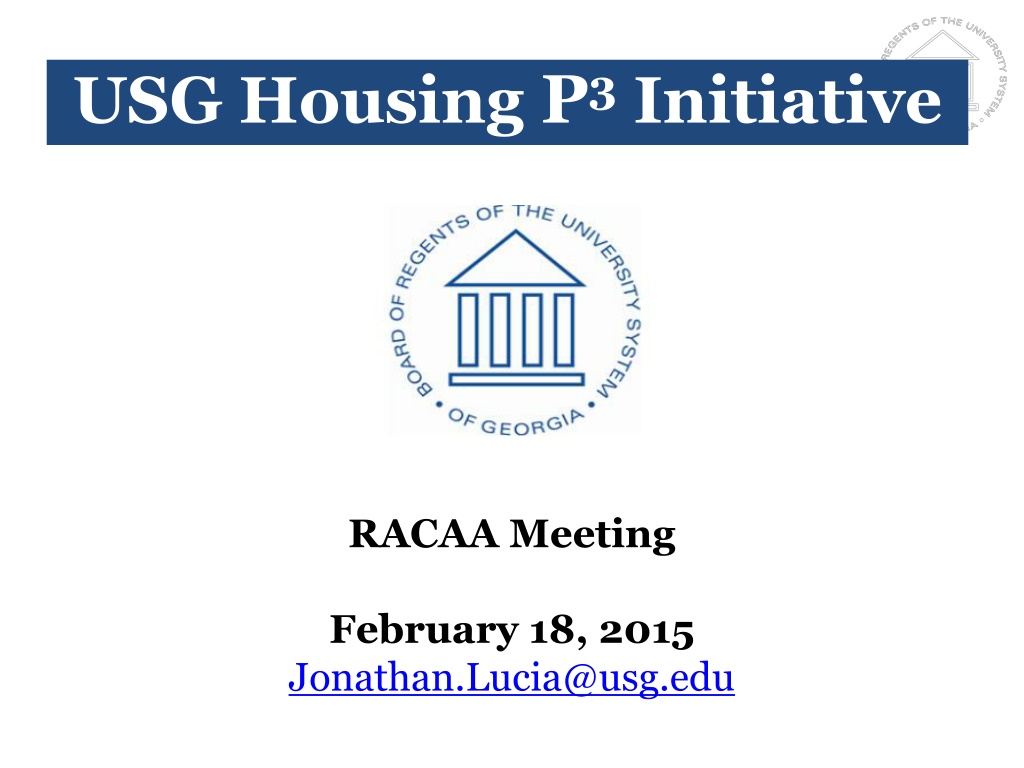
USG Housing P3 Initiative Overview
The USG Housing P3 Initiative aims to provide quality, safe, and affordable housing for students by leveraging private sector efficiencies. Key milestones include the selection of campuses, establishing guiding principles, marketing to developers, and selecting a concessionaire. The partnership with Corvias has allowed for the retirement of $300 million in debt, non-recourse financing, rent caps, and performance-based management fees.
Download Presentation

Please find below an Image/Link to download the presentation.
The content on the website is provided AS IS for your information and personal use only. It may not be sold, licensed, or shared on other websites without obtaining consent from the author. If you encounter any issues during the download, it is possible that the publisher has removed the file from their server.
You are allowed to download the files provided on this website for personal or commercial use, subject to the condition that they are used lawfully. All files are the property of their respective owners.
The content on the website is provided AS IS for your information and personal use only. It may not be sold, licensed, or shared on other websites without obtaining consent from the author.
E N D
Presentation Transcript
USG Housing P3Initiative RACAA Meeting February 18, 2015 Jonathan.Lucia@usg.edu
Guiding Principle Quality, safe, affordable housing for students Objectives Provide additional housing for USG students without incurring additional BOR capital lease obligations; Reduce the amount of BOR capital lease obligations associated with the portfolio of existing housing assets; Leverage private sector efficiencies in the design, construction, operations and maintenance of student housing; and Develop a long-term relationship between the USG, its member institutions and a private housing provider (Concessionaire) to attract students to live on-campus and to enhance the college experience for these students. 2
Key Milestones Board of Regents assembled a team of Advisors/Consultants June/July 2013 Phase I Campuses Selected July/August 2013 Board of Regents establishes Guiding Principles for P3 October 2013 Prepared Due Diligence on Phase I Campuses July 2013 October 2014 Marketed P3 Program to Potential Developers November 2013 April 2014 (Presented Proposed USG P3 Program at 3 National Conferences) Issued Request for Qualification May 2014 Three Firms Short listed July 2014 Final Concessionaire RFP proposals submitted October 2014 Referendum Approved by Voters for P3 Property Tax Abatement November 4, 2014 Corvias Campus Living selected as Concessionaire November 2014 Master Concession Agreement Executed November 2014 Kickoff Meetings on campuses-December/January 2014-2015 April 2015 Financial Close-(anticipated) Leaseback Period-May/June 2015 Project Turnover Date-July 1, 2015 Completion of new construction-July 2016 3
BOR USG Corvias Partnership Every Objective Met $300 million in debt retired New Housing financing non-recourse to BOR Reinvestment plan ensures a funding source for major building overhaul or replacement of housing Rent Caps with BOR final approval Campuses compensated for residence life, security and rent collection expenses Management fees are performance-based Default for failure to perform, failure to pay rent to BOR, bankruptcy 4
Phase I Existing and New Beds Existing Beds New Beds Total 1,324 - 1,324 ABAC 400 75 85 ASU 1,239 - 1,239 352 220 572 CCG 20 20 CSU 444 520 964 DSC - 364 364 75 200 214 414 EGSC 185 GSU 2,322 1,152 3,474 16 GRU - 727 727 314 536 850 UNG TOTAL 75 6,195 3,733 9,928 95 5
Student Centered Partnership New Residence Hall Design process that is collaborative is catered to campus culture and needs i.e. living learning programs, faculty in residence is focused on providing intentional spaces for community development, educational programming, & interaction requires minimum design standards results in secure, comfortable, attractive, & state of the art living environment 8
Student Centered Partnership Quality Assurance Fees paid to Corvias are based on key performance indicators Student satisfaction Condition of facilities Work order completion Occupancy Campuses Maintain Control Housing assignments Program elements i.e. living-learning, faculty in residence Code of conduct Live-on requirement Meal plan requirement Collaborative governance structure 10
Student Centered Partnership Seamless Approach Campus representatives drafted the operating agreement with a seamless student experience as the primary goal All residence life, security, rent collection, and grounds keeping functions retained by campuses Students will continue to pay their housing fees as they previously have and financial aid will apply as usual Rental rate increases capped at 3% All marketing subject to approval by campus 11
Student Centered Partnership Operating Efficiencies Purchasing power leveraged across projects Focus on energy efficiency and sustainable practices and materials-will include educational component for students Identification & alignment of best practices across institutions Allows institutions to focus on core mission while providing well maintained facilities that are conducive to student success Residual income from the cost savings and efficiencies stays with the campuses, the projects, and the BOR-not the private partner Operating efficiencies create improved stewardship of student fees 12
Student Centered Partnership Immediate capital improvements Corvias funding $5.6M for up-front capital repairs and renovations to existing buildings Foundation Disbursements $500,000 per year for needs-based aid-escalates 3% annually Part of contractual agreement with Corvias Funds distributed from USG Foundation to individual Foundations MOU will be provided Similar to other USG Foundation arrangements, Presidents will determine award process 13
Governance Structure Operating Team Concessionaire Operations Director Residence Life Security Finance, Financial Aid, Controller, Bursar Portfolio Management Committee Concessionaire Portfolio Manager Campus P3 Coordinator BOR P3 portfolio manager BOR leadership Management Committee Concessionaire Operations Director Campus P3 Coordinator Finance, Student Affairs, Facilities, Housing BOR P3 portfolio manager Oversee and monitor, evaluate performance, coordinate, resolve issues Execution of partnership, issue identification and day-to-day problem solving Establish standards and procedures, ensure accountability, portfolio decisions 14
Flow of Funds Revenues: 1. Gross Revenues Student Housing Rents, Application/Reservation Fees, Summer Revenue Other income; campus rental of space etc. Operating Expenses: 2. Ground Rent (Guaranteed) 3. Retained Services (15% GR)-Residence Life, Rent Collection, Security, Grounds keeping, Marketing 4. Operating Expenses 5. Repair and Replacement Reserve ($175.00 per bed) Debt Service Net Operating Income 6. Base Management Fee-2% 7. Performance Management Fee-2.25% (based on Key Performance indicators) Net Cash Flow 8. 50% Residual Cash Flow to USG (Contingent Rent) 9. 50% Reinvestment Reserve Fund 15
FY 2016 Campus Disbursements Retained Services Base Rent Total Payment Total Revenue ABAC ASU CCG CSU DSC EGSC GSU UNG GRU Total Campus Distributions $43,891,325 974,000 1,015,000 275,000 470,000 1,300,000 1,050,000 140,000 670,000 140,000 140,000 1,300,000 335,000 175,000 2,274,000 2,065,000 415,000 1,140,000 140,000 315,000 4,730,000 580,000 175,000 0 175,000 3,430,000 245,000 0 $5,250,000 $11,834,000 $6,584,000 15.00% 16
FY 2017 Campus Disbursements Retained Services Base Rent Total Payment Total Revenue ABAC ASU CCG CSU DSC EGSC GSU UNG GRU Total Campus Distributions $69,438,194 1,052,000 1,047,720 488,000 1,160,000 345,000 393,009 4,630,000 700,000 600,000 2,072,000 2,107,720 688,000 1,830,000 530,000 593,009 5,930,000 1,130,000 925,000 1,020,000 1,060,000 200,000 670,000 185,000 200,000 1,300,000 430,000 325,000 $15,805,729 $10,415,729 15.00% $5,390,000 17
Phase II Review of campus requests underway Analysis of debt and performance of entire housing portfolio Discussions with potential participants & due diligence- February-May 2015 18












